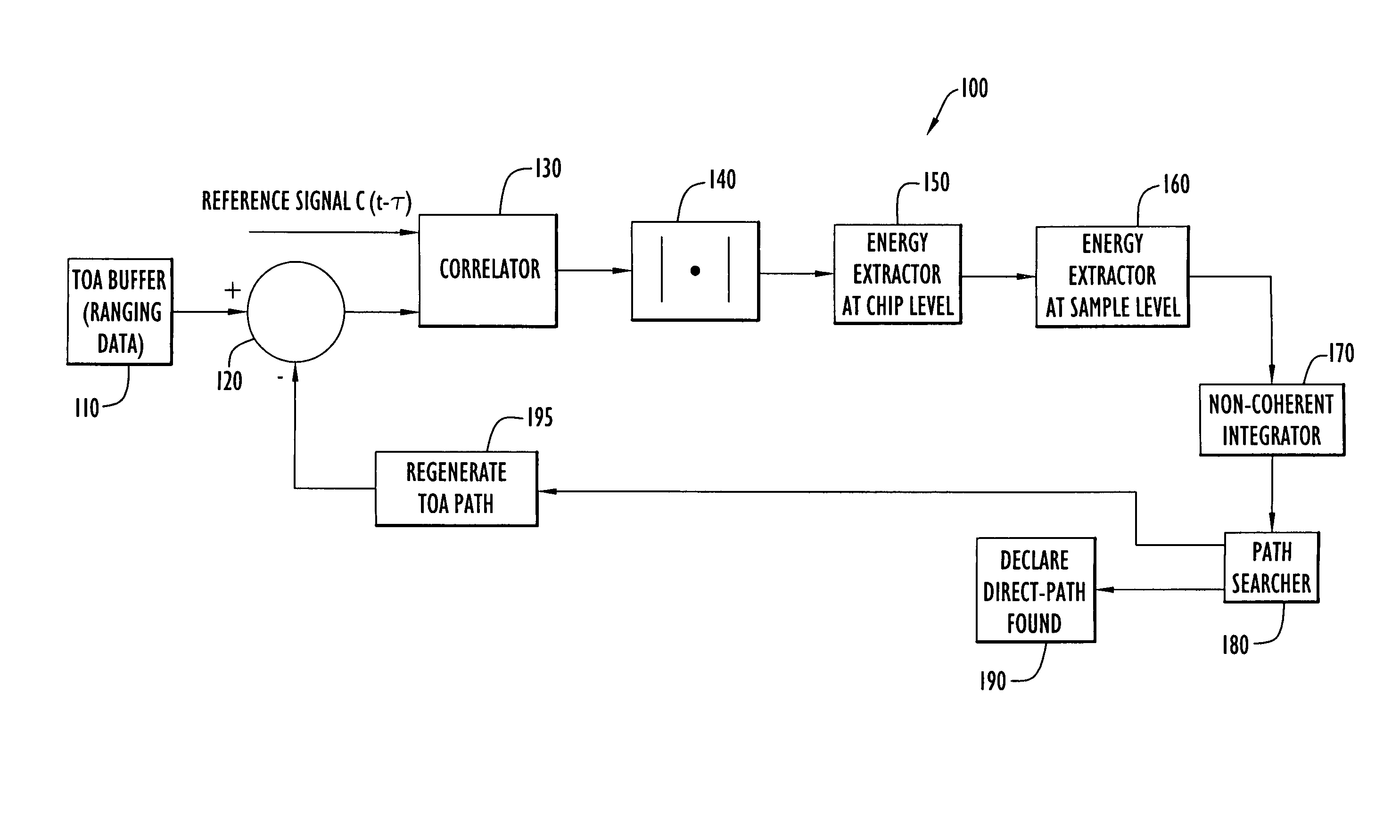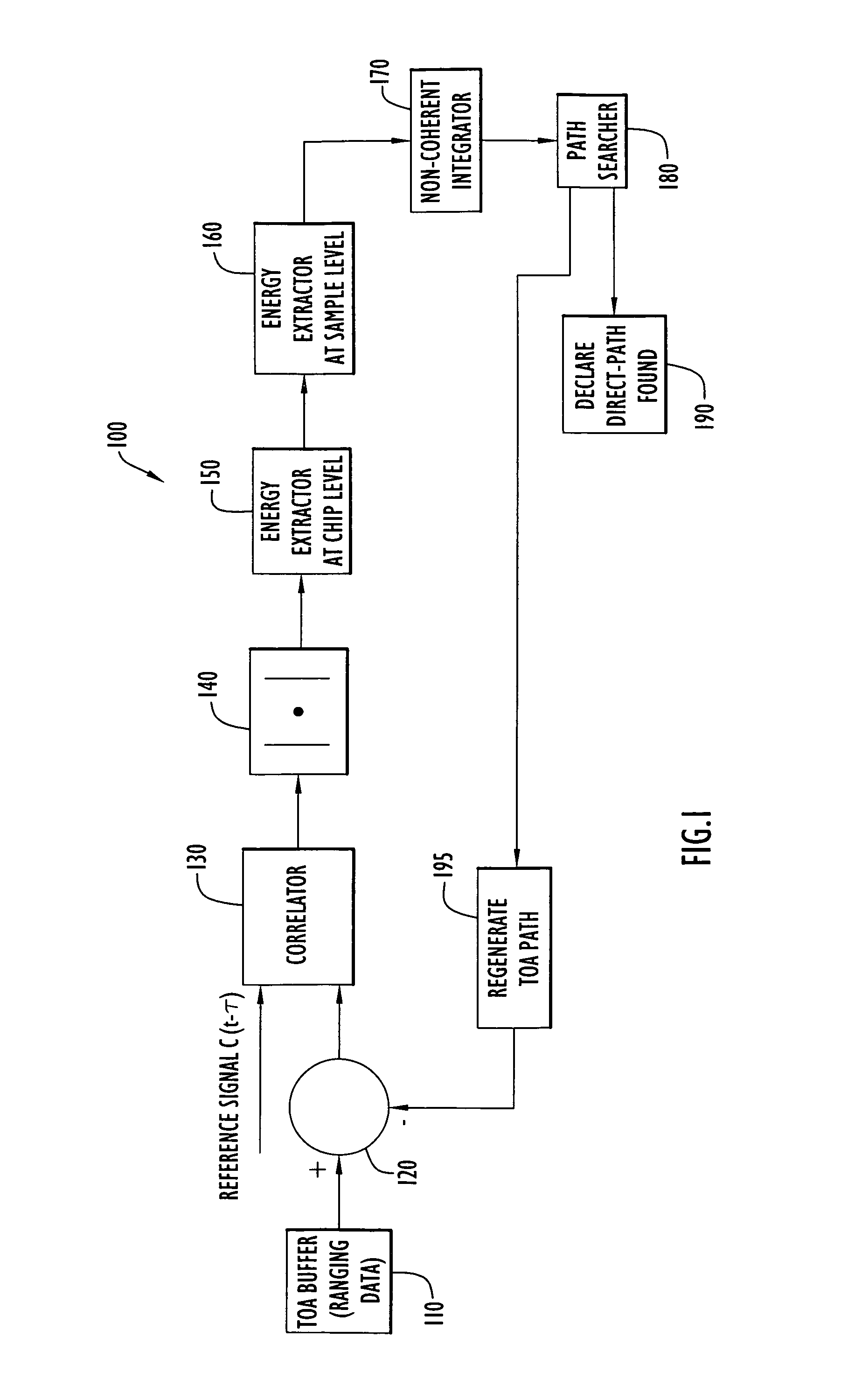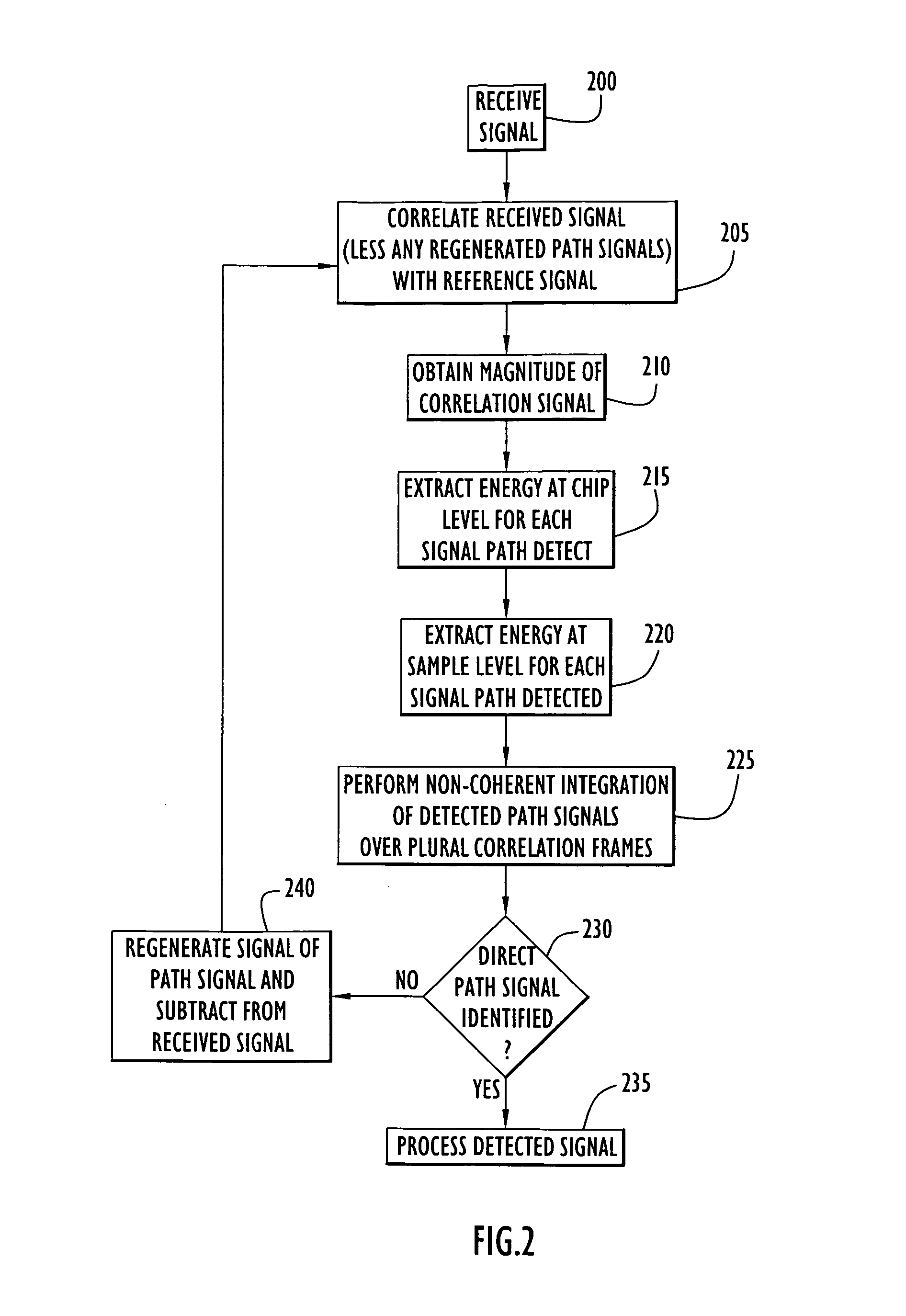Methods and apparatus for detection of signal timing
a signal timing and detection method technology, applied in the direction of instruments, navigation instruments, amplitude demodulation, etc., can solve the problems of reducing the accuracy and operability of such position location techniques, affecting the accuracy of signal timing, so as to reduce the amplitude of other samples and reduce the amplitud
- Summary
- Abstract
- Description
- Claims
- Application Information
AI Technical Summary
Benefits of technology
Problems solved by technology
Method used
Image
Examples
Embodiment Construction
[0029]The invention overcomes the aforementioned problem of strong multipath signals by iteratively subtracting the estimated strong-path signals from a received signal at the input of a correlator. When M number of signals from dominant paths are present in the correlator, each path's signal can be accurately estimated with its magnitude and phase, and the contributions of these signals to the total received signal can be completely eliminated. As a result, only the desired path signal such as the direct path is left at the correlator output.
[0030]Detecting an individual path among many paths is achieved by utilizing the symmetric property of the auto-correlation function of a spread-spectrum waveform. The triangular shape of the correlation function provides the opportunity to process the shape to extract the desired path by enhancing its correlation value at the path position and at the same time to suppress the other paths' interference. However, a simple one-stage processing of...
PUM
 Login to View More
Login to View More Abstract
Description
Claims
Application Information
 Login to View More
Login to View More - R&D
- Intellectual Property
- Life Sciences
- Materials
- Tech Scout
- Unparalleled Data Quality
- Higher Quality Content
- 60% Fewer Hallucinations
Browse by: Latest US Patents, China's latest patents, Technical Efficacy Thesaurus, Application Domain, Technology Topic, Popular Technical Reports.
© 2025 PatSnap. All rights reserved.Legal|Privacy policy|Modern Slavery Act Transparency Statement|Sitemap|About US| Contact US: help@patsnap.com



